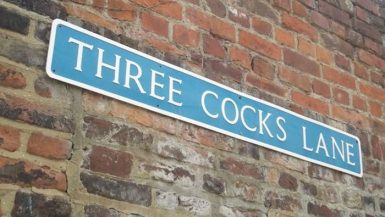St Conan’s Kirk: A Highland Masterpiece on the Shores of Loch Awe
Tucked away in the village of Lochawe, on the tranquil banks of Scotland’s longest freshwater loch, stands one of the country’s most enchanting and eccentric churches—St Conan’s Kirk. With its whimsical architecture, rich clan connections, and serene setting, this hidden gem is a testament to Victorian imagination and Highland heritage. Whether you’re drawn by its beauty, its history, or its spiritual presence, St Conan’s Kirk offers a deeply moving experience in the heart of Argyll.
🏰 A Church Built from Love and Legend
St Conan’s Kirk was commissioned in the late 19th century by Walter Douglas Campbell, a wealthy landowner, architect, and brother of the renowned author and politician John Campbell, 9th Duke of Argyll. Walter built the church initially for his mother, who found it difficult to travel to the parish church in Dalmally. What began as a modest chapel evolved into a sprawling, romantic structure that blends Norman, Gothic, Celtic, and even Arts and Crafts styles.
Construction began in 1881 and continued for decades, with Walter personally overseeing every detail. He incorporated salvaged materials from across Scotland, including stones from Iona Abbey and oak beams from decommissioned warships. The result is a building unlike any other—complete with cloisters, a tower, a chapter house, and even a stone effigy of Robert the Bruce.
⚰️ Who Lies Beneath: Robert the Bruce’s Tomb
One of the most remarkable features of St Conan’s Kirk is the tomb of Robert the Bruce, King of Scots. While Bruce’s actual remains lie in Dunfermline Abbey, the kirk houses a symbolic tomb with a life-sized effigy carved in stone. The tomb rests in the Bruce Chapel, a solemn and atmospheric space that honors the warrior king who led Scotland to independence in the 14th century.
The inclusion of Bruce’s tomb reflects Walter Douglas Campbell’s deep admiration for Scottish history and his desire to create a spiritual and national monument. The chapel is adorned with heraldic symbols and medieval-style carvings, making it a place of pilgrimage for those who revere Scotland’s storied past.
🛡️ Clan Connections: Campbells and Highland Heritage
St Conan’s Kirk is deeply tied to Clan Campbell, one of the most powerful and influential clans in Scottish history. The Campbells were the dominant force in Argyll for centuries, known for their political acumen, military strength, and complex legacy.
- Walter Douglas Campbell, the church’s creator, was a member of the Campbell family and lived at nearby Innis Chonain, an island estate on Loch Awe.
- The Dukes of Argyll, heads of Clan Campbell, resided at Inveraray Castle, just a short drive from Lochawe. Their influence shaped the region’s architecture, economy, and cultural life.
- The kirk contains memorials and dedications to various Campbell family members, including stained glass windows and carved plaques.
Other clans with historical ties to the area include:
- Clan MacGregor: Once outlawed and persecuted, the MacGregors had strong roots in nearby Glenstrae and Glen Orchy. Their resilience and fierce independence are part of the region’s lore.
- Clan MacIntyre: Traditionally associated with Glen Noe, just east of Loch Awe, the MacIntyres were hereditary foresters to the Campbells and played a vital role in managing the land.
- Clan Lamont: Though based further west, the Lamonts had interactions with the Campbells, often marked by conflict and shifting alliances.
These clans shaped the social and political landscape of Argyll, and their stories are woven into the fabric of St Conan’s Kirk and the surrounding glens.
🏘️ The Village of Lochawe and Surrounding Community
Lochawe is a small, peaceful village that hugs the northern shore of Loch Awe. It grew around the railway station built in the 1880s, which brought Victorian tourists to the area and helped establish it as a retreat for artists, anglers, and nature lovers.
Nearby attractions include:
- Kilchurn Castle: A dramatic ruin at the head of Loch Awe, once a stronghold of the Campbells of Glenorchy.
- Ben Cruachan: A towering Munro that dominates the skyline and offers challenging hikes and panoramic views.
- Cruachan Power Station: Known as the “Hollow Mountain,” this hydroelectric facility is built inside Ben Cruachan and offers fascinating tours.
- Dalmally: A neighboring village with its own historic kirk and ties to Clan MacGregor.
The community around Lochawe is small but vibrant, with guesthouses, cafés, and local artisans who celebrate the area’s natural beauty and cultural heritage.
🕍 Architectural Highlights of St Conan’s Kirk
- The Cloisters: A peaceful walkway with arched columns and views of the loch.
- The Nave: A soaring space with timber beams, stained glass, and carved stone.
- The Bruce Chapel: Home to the symbolic tomb of Robert the Bruce.
- The Tower: Offering views across Loch Awe and toward Kilchurn Castle.
- The Chapter House: A circular room with intricate woodwork and a domed ceiling.
Every corner of the kirk reveals Walter Douglas Campbell’s passion for craftsmanship and storytelling. It’s a place where history, faith, and imagination converge.
Final Thoughts
St Conan’s Kirk is more than a church—it’s a love letter to Scotland. From its whimsical architecture to its solemn tributes, it captures the spirit of the Highlands and the legacy of the clans who shaped them. Whether you arrive by train, car, or boat across Loch Awe, the kirk welcomes you with open arms and centuries of stories.
If you’re exploring Argyll, make time for Lochawe. Walk the cloisters, gaze upon Bruce’s effigy, and let the silence of the loch speak to you. In a land of castles and legends, St Conan’s Kirk stands as one of the most soulful stops of all.
Sources:
- St Conan’s Kirk Trust
- Historic Environment Scotland
- Clan Campbell Society UK
- VisitScotland: Argyll & The Isles
- Undiscovered Scotland: St Conan’s Kirk and Loch Awe




Leave a reply
You must be logged in to post a comment.